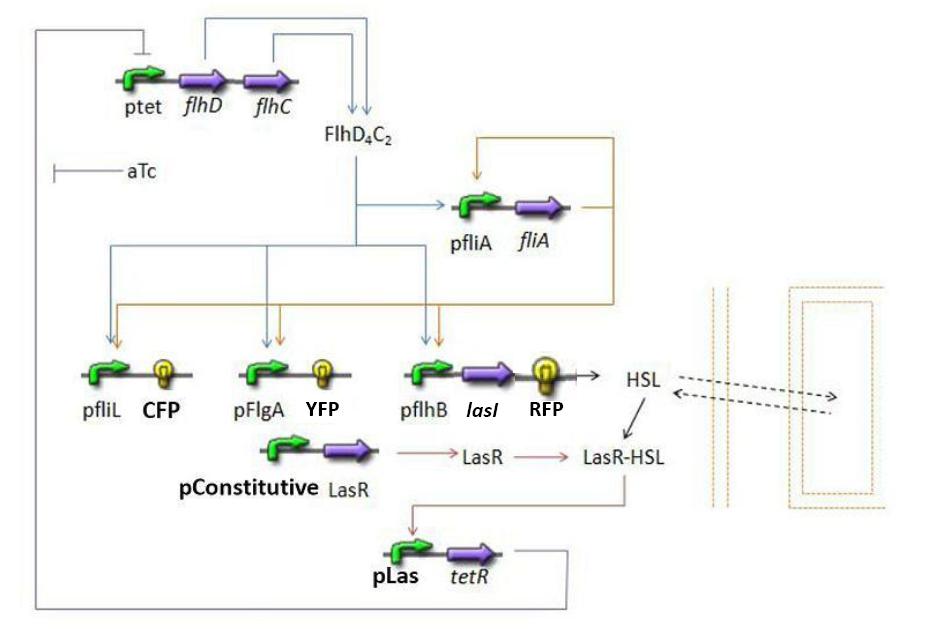Team:Paris/Modeling/BOB
From 2008.igem.org
(Difference between revisions)
| Line 8: | Line 8: | ||
[[Image:Globalmodel.jpg|600px|center]] | [[Image:Globalmodel.jpg|600px|center]] | ||
| + | |||
| + | =Bibliography= | ||
| + | Much of our inspiration comes from four articles to which we shall refer in the next subsections : | ||
| + | <br> | ||
| + | * [1] Shiraz Kalir, Uri Alon. Using quantitative blueprint to reprogram the dynamics of the flagella network. Cell, June 11, 2004, Vol.117, 713-720. | ||
| + | *[2]Jordi Garcia-Ojalvo, Michael B. Elowitz, Steven H. Strogratz. Modeling a synthetic multicellular clock : repressilators coupled by quorum sensing. PNAS, July 27, 2004, Vol. 101, no. 30. | ||
| + | * [3]Nitzan Rosenfeld, Uri Alon. Response delays and the structure of transcription networks. JMB, 2003, 329, 645-654. | ||
| + | * [4]Nitzan Rosenfeld, Michael B. Elowitz, Uri Alon. Negative autoregulation speeds the response times of transcription networks. JMB, 2003, 323, 785-793. | ||
| + | * [5]S.Kalir, J. McClure, K. Pabbaraju, C. Southward, M. Ronen, S. Leibler, M. G. Surette, U. Alon. Ordering genes in a flagella pathway by analysis of expression kinetics from living bacteria. Science, June 2001, Vol 292. | ||
| + | |||
| + | =Summary of the steps modeled= | ||
| + | Here is a quick summary of the step we decided to interpret mathematically... | ||
| + | * FIFO temporal order system | ||
| + | ** FliA behind pFliA= f(FlhDC,FliA) | ||
| + | ** CFP behind pFliL = f(FlhDC,FliA) | ||
| + | ** YFP behind pFliL = f(FlhDC,FliA) | ||
| + | ** RFP and LasI behind pFliL = f(FlhDC,FliA) | ||
| + | * Synchronisation : las system | ||
| + | ** HSL = f(LasI) | ||
| + | ** HSL ⇋ HSLext | ||
| + | ** TetR = f(HSL) | ||
| + | ** FlhDC = f(TetR) | ||
| + | * Synchronisation : lux system | ||
| + | ** HSL = f(LasI) | ||
| + | ** HSL ⇋ HSLext | ||
| + | ** TetR = f(HSL) | ||
| + | ** FlhDC = f(TetR) | ||
| + | |||
| + | =Establishing the model= | ||
| + | ==Population evolution | ||
Revision as of 16:05, 27 August 2008
Introduction
BibliographyMuch of our inspiration comes from four articles to which we shall refer in the next subsections :
Summary of the steps modeledHere is a quick summary of the step we decided to interpret mathematically...
Establishing the model==Population evolution |
 "
"

